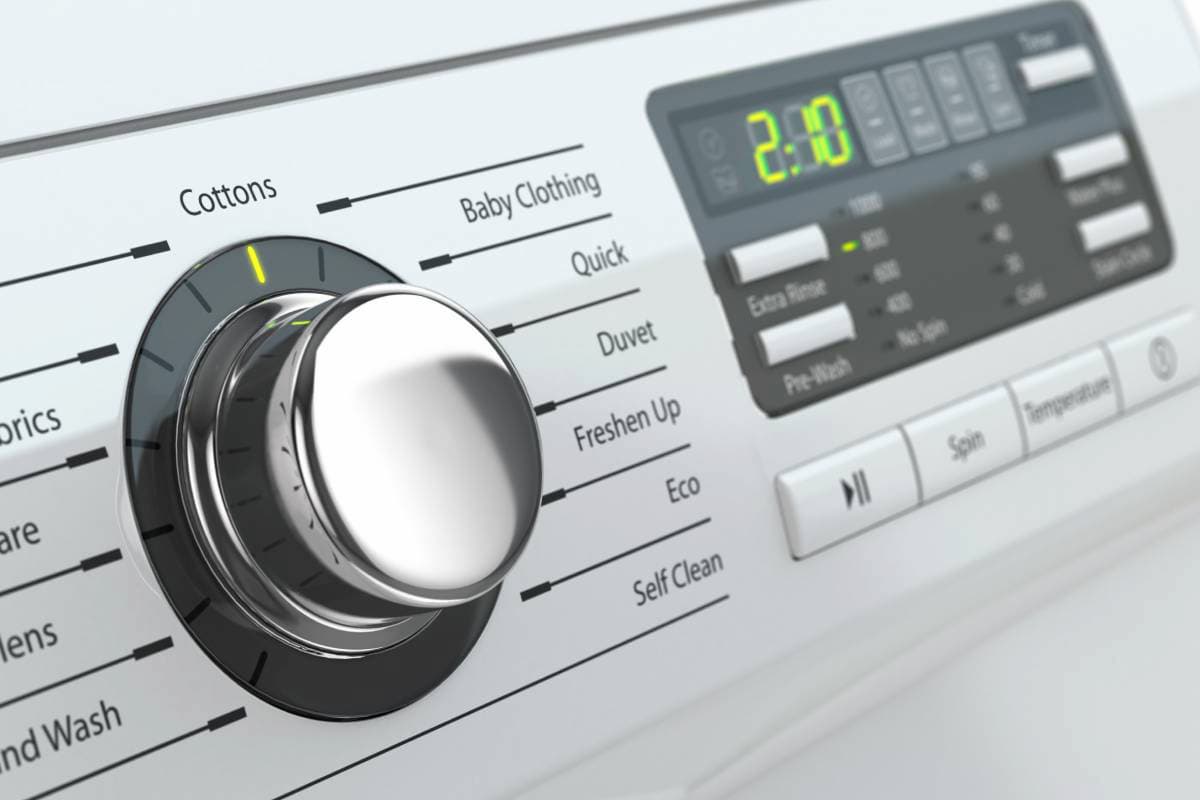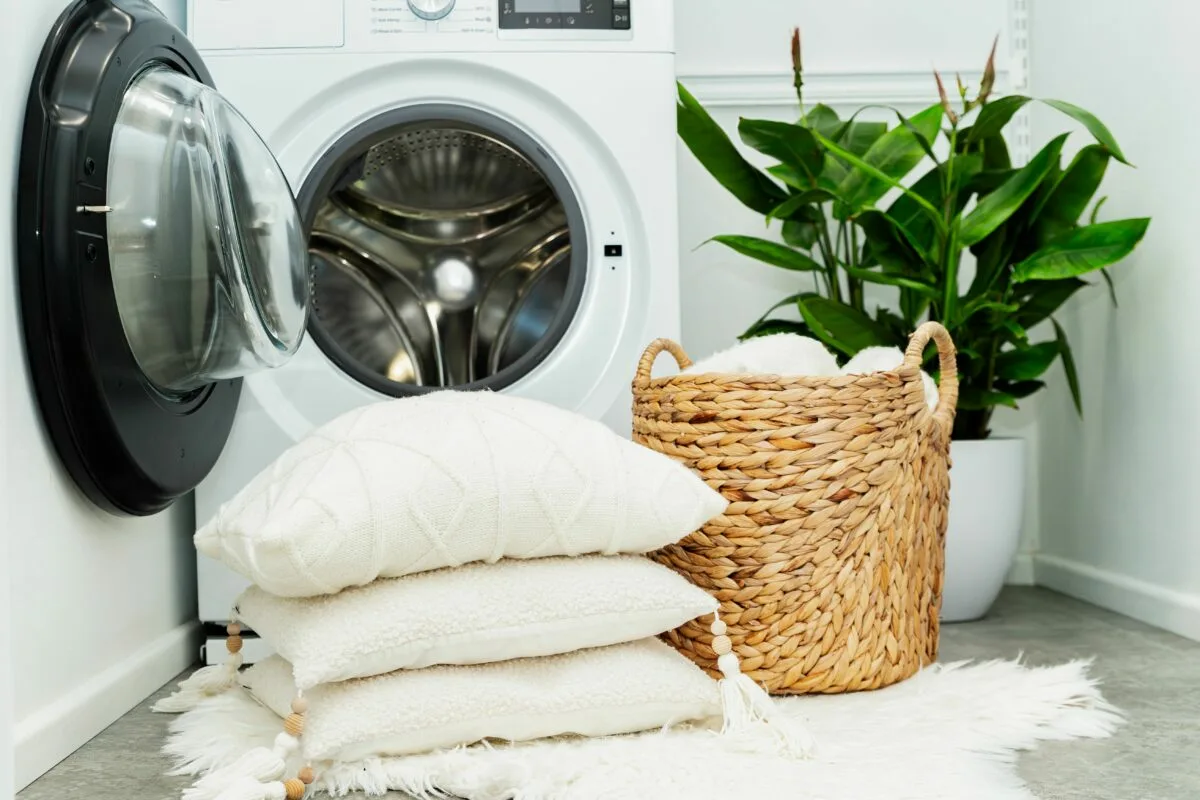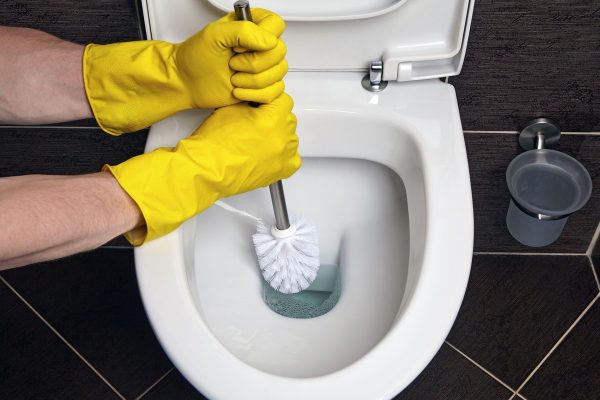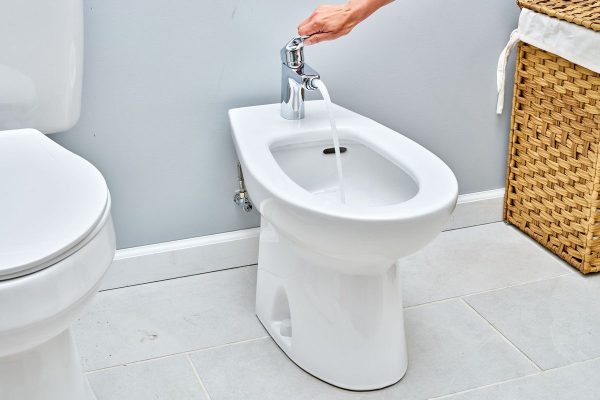It is advisable to use a gentle, short programme in cold water, avoiding hot water and spinning.
With the arrival of cold weather, it’s time to take the blankets that have been stored away for months out of the wardrobe — or wherever we keep them. If we did it correctly, with proper closures, we will have prevented them from being exposed to dust, moisture or mites. Even so, it is best to wash them before using them again.
After several months in storage, blankets may smell musty, or even damp if they were not properly protected, or they may have accumulated dust. Washing them will not only make them fresher and more pleasant, but will also help to protect our health and prolong their useful life. However, washing them at home has its tricks.
How to wash them in the washing machine
Washing blankets in the washing machine is not the same as washing “normal” clothes. Due to their size and the amount of water they can absorb, a blanket can double or even triple its weight, which affects the washing machine drum.
Bear in mind that even if a blanket fits in the washing machine drum, when it becomes saturated with water during washing, it can double or even triple in weight, which poses a risk to the drum. As a preventive measure, in these cases it is best to wash them by hand or take them to a laundrette. This is just one aspect to consider, but not the only one:
- Check the label. Not all blankets are machine washable. Pure wool or delicate fabrics usually require hand washing or dry cleaning.
- Choose the right programme. Select a short, gentle cycle with cold water and, if possible, without a strong spin cycle. Heat and sudden twists can shrink, deform or damage the fibres.
- Do not overload the washing machine. Even if the blanket fits inside, when wet it can double or triple in weight. This puts the drum and door hinges at risk. If you notice that your washing machine cannot handle it, it is better to wash it by hand or take it to a laundrette.
- Use mild detergent. A small amount is enough to avoid leaving residue. Avoid harsh fabric softeners, which can weigh down the fibres.
- Dry correctly. Do not wring out the blanket to drain it, as this can deform it. Ideally, spread it out on a large clothesline, preferably horizontally, so that it retains its shape.
Bear in mind that some blankets, due to their size or composition, are not suitable for washing in a domestic washing machine and it is best to take them to a dry cleaner’s or laundrette to have them cleaned.

Alternative: hand washing
If you prefer not to risk using the washing machine, you can fill the bathtub with cold water and a little detergent. Leave the blanket to soak for about 20-25 minutes, move it gently so that the water circulates and, after rinsing several times, wring it out without twisting it. The process is slower, but it ensures that the blanket does not lose its quality.
Why it is advisable to wash blankets before use
Washing blankets before use promotes hygiene, health and comfort by eliminating dust mites and unpleasant odours. It also helps to preserve the fabric and protects the washing machine, avoiding unnecessary strain.
In terms of hygiene, washing removes mites, dust and any moisture that may have accumulated during storage. All of this helps to protect our health by preventing allergies and respiratory problems, especially in people who are sensitive to mites or dust.
In terms of comfort, blankets regain their softness and a fresh smell, which improves the feeling of well-being when using them.
Furthermore, we must not forget durability; good care prevents damage to the fabric and keeps the blanket in better condition for longer.
Finally, it also protects the washing machine: using the right programme and respecting the maximum weight prevents strain on the drum or hinges, which helps to extend the life of the appliance.





